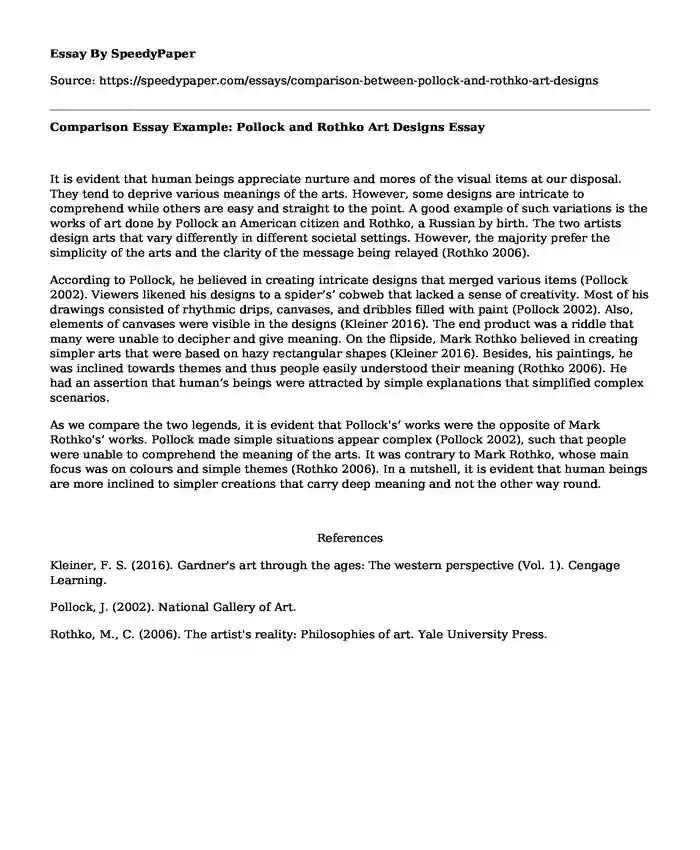It is evident that human beings appreciate nurture and mores of the visual items at our disposal. They tend to deprive various meanings of the arts. However, some designs are intricate to comprehend while others are easy and straight to the point. A good example of such variations is the works of art done by Pollock an American citizen and Rothko, a Russian by birth. The two artists design arts that vary differently in different societal settings. However, the majority prefer the simplicity of the arts and the clarity of the message being relayed (Rothko 2006).
According to Pollock, he believed in creating intricate designs that merged various items (Pollock 2002). Viewers likened his designs to a spider’s’ cobweb that lacked a sense of creativity. Most of his drawings consisted of rhythmic drips, canvases, and dribbles filled with paint (Pollock 2002). Also, elements of canvases were visible in the designs (Kleiner 2016). The end product was a riddle that many were unable to decipher and give meaning. On the flipside, Mark Rothko believed in creating simpler arts that were based on hazy rectangular shapes (Kleiner 2016). Besides, his paintings, he was inclined towards themes and thus people easily understood their meaning (Rothko 2006). He had an assertion that human’s beings were attracted by simple explanations that simplified complex scenarios.
As we compare the two legends, it is evident that Pollock's’ works were the opposite of Mark Rothko's’ works. Pollock made simple situations appear complex (Pollock 2002), such that people were unable to comprehend the meaning of the arts. It was contrary to Mark Rothko, whose main focus was on colours and simple themes (Rothko 2006). In a nutshell, it is evident that human beings are more inclined to simpler creations that carry deep meaning and not the other way round.
References
Kleiner, F. S. (2016). Gardner's art through the ages: The western perspective (Vol. 1). Cengage Learning.
Pollock, J. (2002). National Gallery of Art.
Rothko, M., C. (2006). The artist's reality: Philosophies of art. Yale University Press.
Cite this page
Comparison Essay Example: Pollock and Rothko Art Designs. (2017, Nov 13). Retrieved from https://speedypaper.net/essays/comparison-between-pollock-and-rothko-art-designs
Request Removal
If you are the original author of this essay and no longer wish to have it published on the SpeedyPaper website, please click below to request its removal:
- Essay Sample Describing the Decontamination in Rural Hospital
- Reflection Essay Example: An Ethical Dilemma
- Has Technology Helped or Hindered the American Society? Free Essay
- Free Paper Sample on General Motors and Change Management
- Psychology Essay Example: Case Study Using 5P's Model
- Escaping Freedom - Essay Example about Independence in Marriage
- Symbolism in The Storm by Kate Chopin. Free Essay Sample
Popular categories





